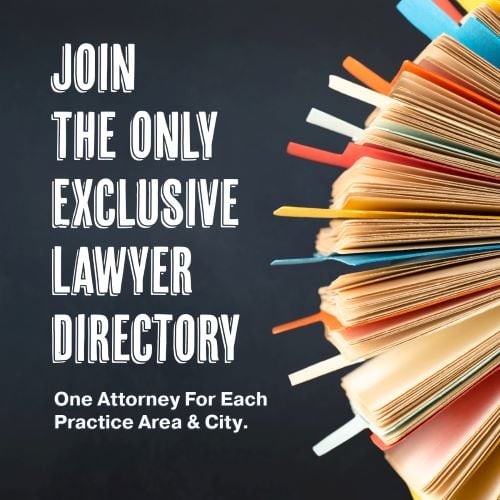You are in the relationship-building business. For lawyers, it is imperative to consistently and persistently cultivate, nurture and strengthen their relationships with their universal network – with clients, to receive more work; with referral sources, to receive more referrals; with prospects to develop new work, and so on. Then, answer me, why is it that a significant number of lawyers (clients and wannabes) either have no system (formal or otherwise) for getting and staying in touch with these people and/or do a dismal job of staying connected?
What Does “Getting and Staying in Touch” Mean?
Again, a seemingly obvious question, but in my legal marketing practice of over 20 years, I have yet to encounter more than a handful of lawyers who understand, as a practical matter, the fundamental principle of this phrase.
Starting with the widely-known statistic that it takes from seven to ten “touches” annually to stay “top-of-mind,”, lawyers are well-served to develop (often with the support of their legal secretary/assistant/marketing or IT department) a consolidated contact list including:
- Clients
- Industry/professional contacts
- Referral sources
- Prospects
- Friends and family
- School classmates (law school, college, high school, etc.)
- Co-workers and former co-workers
- Contacts from former clerkships
- Association contacts
- Community contacts
- Holiday card recipients
Though it may be an arduous administrative task to assemble all the business cards, old Rolodexes (yes, Iʼm showing my age), database printouts, etc., it is important to have all your contacts in one system.
As I often relay to my clients, having no list equals having no connections or communications with friends, peers, industry contacts, prospects and ultimately, no clients. Remember, weʼre in the “relationship-building” business and it becomes much more daunting to foster relationships if we donʼt proactively get and stay in touch.
While I could outline the precise steps lawyers need to take in assembling, organizing, categorizing and systemizing their contacts, Iʼll spare the reader the administrative details in this article except to point out that once the task of gathering and entering all your contacts into a central system (even Outlook does a decent job of this) is complete, lawyers would be sorely remiss if they did not “categorize” their contact names.
What does this mean?
For purposes of communicating regularly with your various constituents (clients, referral sources, prospects, etc.), no one communication message will be of interest to everyone on your contact list. That is to say, if you develop an e-newsletter or legal update on the importance of developing social media policies for the workplace and send it to your human resource clients, that topic may be of little interest to your charitable organization contacts unless they are involved in employment law issues. Basically, you want to tailor your message to an intended audience and there is no better way than to develop “categories” of contacts.
When it comes to knowing how, when and how often to reach out, paramount on most attorneysʼ minds is that they do not want to be perceived as “too pushy,” “aggressive” or otherwise annoying. Understandable. One principle I often convey to my clients is that most people are so involved in their own world, business, family, etc., that you are not capturing 100 percent of their attention most of the time.
In other words, to adequately “register” on your targetsʼ radar, there must be regular, consistent and persistence “touch points”, be they via email, telephone call, face-to-face (for which there is no substitute) or social media outlets, just to name a few.
Check Motivations
To build and grow a healthy practice, it is imperative to develop a system of getting and staying in touch but doing so with the appropriate mindset. In short: “Itʼs not about you”.
Lawyers often ask me, “What is it that Iʼm saying to all these people?” “I donʼt want to bother these folks” and other such sentiments.
My response is usually a variation on the theme of reaching out with a helpful spirit and with true intentions of checking in on your contactsʼ business, seeing how they are making out with a recent transition or starting a new position, or a company move, etc. Those who sow seeds of goodwill certainly reap only good things. Or, said another way, employing Newtonʼs law of motion, “for every action, there is an equal and opposite reaction.” The more “goodwill” you put out, the more it will come back to you…usually multi-fold.
Time Considerations
Attorneys are very busy people, often logging their time in six-minute increments. Where do they “find” the time to get and stay in touch with everyone AND have the much-needed downtime?
Just today, I explained to a junior partner client that if addressed productively, his contacts will soon be in his personal network circle. Think about it, we all have certain people with whom we enjoying sharing time. What if those special people could be the same people in your categorized contact lists? How cool would that be? Kill two birds with, well, you know.
For the successful senior attorneys among us, many of you have worked most of your professional careers to create this very scenario. But, it didnʼt happen overnight. It took years, in some cases, one contact at a time.
This brings me to my next point.
Leverage Technology
In our global Internet age, it has never been easier to “get and stay in touch” with a broad base of contacts via the technology tools available (i.e. LinkedIn, Facebook, Twitter, blogging, etc.). Not a technophile? No sweat; there are “people” who make a career of helping clients “connect”. One such job title is “certified social media specialist”.
These days, lawyers do not need to spend time (that they donʼt have) writing articles, e-newsletters, blog posts, etc. but are well served to delegate this to other trained legal writers. The marketplace is full of highly qualified talent to assist with this task.
Net-Net
In the growing competitive legal services arena, cultivating strong relationships is more important than ever before. As a successful lawyer and business owner, you must find a way to get and stay in touch with your desired audiences, targeted constituents, and those folks who ultimately can help you grow a healthy practice. It is most easily done by:
- Committing to making it happen.
- Gaining buy-in with your support resources (internal and/or external) so everyone is on the same page.
- Developing a viable and workable system for gathering, categorizing, and maintaining contacts on an ongoing basis.
- Scheduling dates/calendar regular communication with your contacts in addition to the other regular “touches”.
- Repeat. Kimberly Rice










